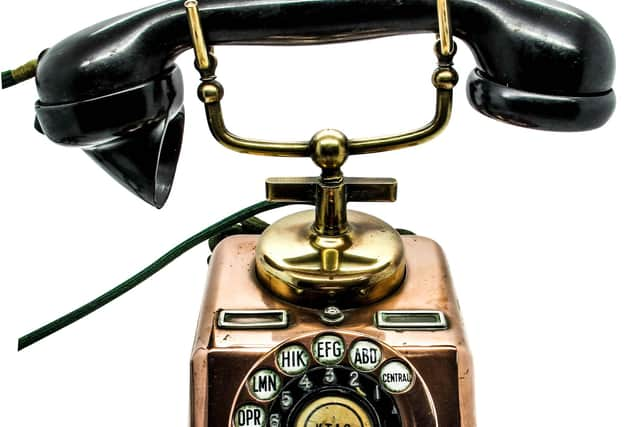Antiques Column: All manner of designs for the amazing invention of the telephone
and live on Freeview channel 276
I was never allowed to answer it though as it was an adult only instrument. We were, I remember, on a party line. I knew this because even though my sisters and I were threatened with ‘serious consequences’ if we answered the telephone, I often picked it up when no was around and sometimes heard our neighbour chatting on the other end. That was a serious thrill.
Later teenage years, after suitable tuition on method and politeness, brought the grown up responsibility of answering incoming calls. Fascination and intrigue quickly evaporated after that.
Advertisement
Hide AdAdvertisement
Hide AdIt was Alexander Graham Bell who set the ball rolling in 1876 when he patented the speaking telephone. Since then all manner of designs for this amazing invention have been made.


An early design for the telephone was the ‘candlestick’ model made with a separate mouth piece and ear piece, synonymous with Al Capone.
It was however, the invention of Bakelite that saw the development of telephones take a new direction, beginning with ‘pyramid’ phones which are now Art Deco icons. Commonly made in black, the rarer green, white and red versions make much more at auction.
All Bakelite telephones show their date and manufacturer on the base” and their value increases if they still have their original chrome dial, plaited cord and pullout drawer in tact.
Advertisement
Hide AdAdvertisement
Hide AdLike most things, the telephone also had its designers styles; the first of these is largely credited to the ‘Ericofon’. It was the first one piece telephone and was developed by Ericsson in the early 1950s. It came in fourteen different colours but pink and orange still are the rarest and most collectable.
The production of the ‘Ericofon’ was world wide. The British one piece telephone, the ‘Trimphone’ and the Italian version ‘Grillo’ never achieved the success of the ‘Ericofon’ and very few are available on the auction market today. Obviously though, this only increases their value if you are lucky enough to find one. The value of a telephone lies in the desirability of the model and the rarity of the colour.